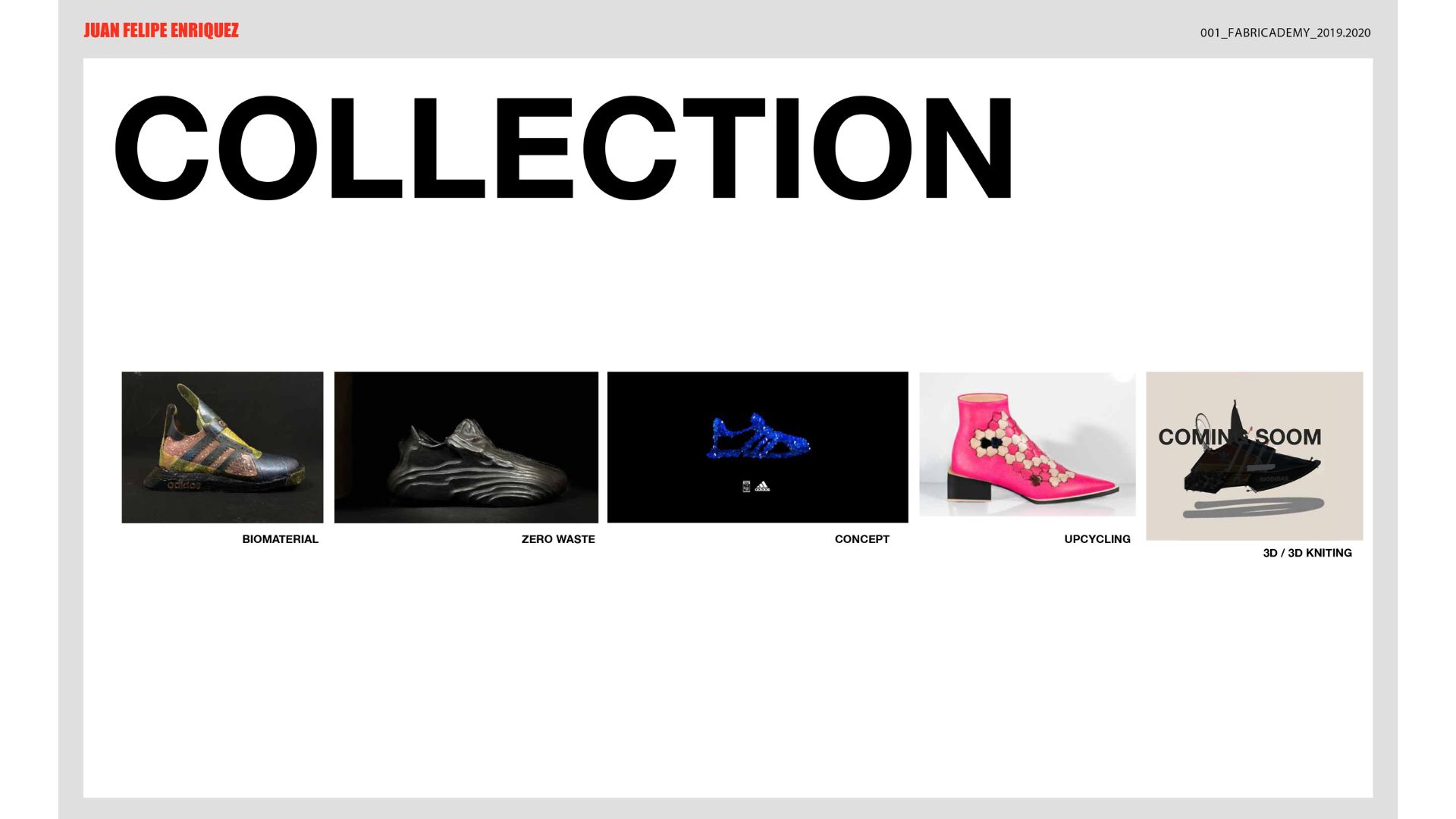Ideation and Process¶
For my final project I decided to build a sneaker collection where each one of the design can communicate a different concept of technology and innovative materials. All of these without forgetting express the aesthetic style I always include in my designs. It´s important to highlight that each of these models is inspired by 1 of the ecosystems of my country, Ecuador, such as Sierra Region, Coast Region and Amazon Region.
The design based on the coastal region focus in the issue that we face due to the pollution of the oceans. Which reach to more than 24 billions shoes produced each year and where 80% of them ends up in landfills or in the ocean. My goal was to create a shoe collection that can mitigate this damage.
Ocean sneakers line¶
I named this first model ¨Food for fish¨, a shoe based on bioplastics that can dissolve in the ocean once its useful life ends. In addition, ¨Food for fish¨ is part of the research I had been working in biomaterials such as algae, gelatin and other biological materials that can transform itself as food for marine animals.
Even if there where different points of view between my mentor and I, I decided to give it a go and try different recipes with the goal of find the most resistant to being malleable and long-lasting, thinking that this material was going to be used in footwear.
For the first sole sample, I used around 1 kg of gelatin with charcoal and soap to create a fairly flexible sole with an optimal result. Thanks to this research and testing I discovered that the great potential of a material that can bring comfort and cover up the necessities for a shoe sole. Furthermore, for the insole I decided to change a bit the recipe and improve it, adding water-repellent qualities to the material since feet tend to sweat. After a huge research I found that milk could give this quality.
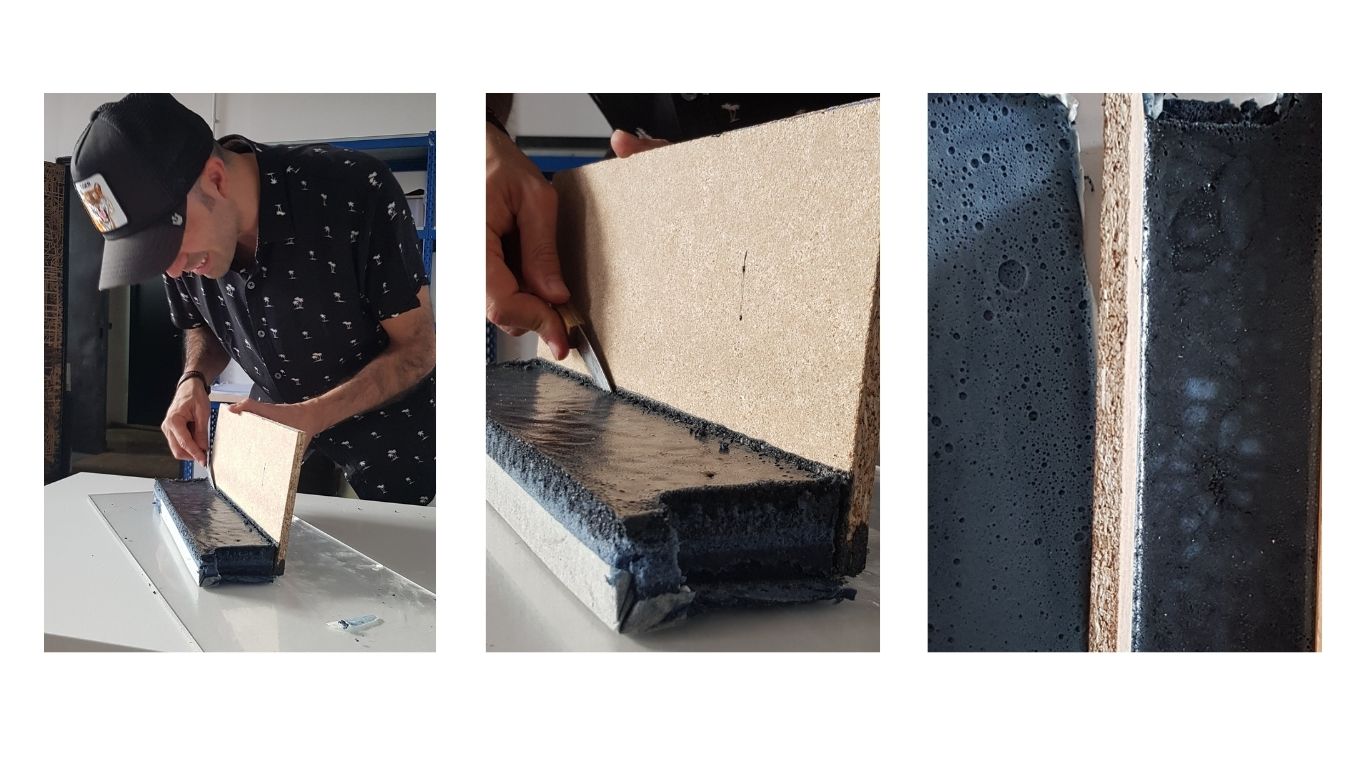 Find below a photo of the insole and sole shoe prototype development.
Find below a photo of the insole and sole shoe prototype development.
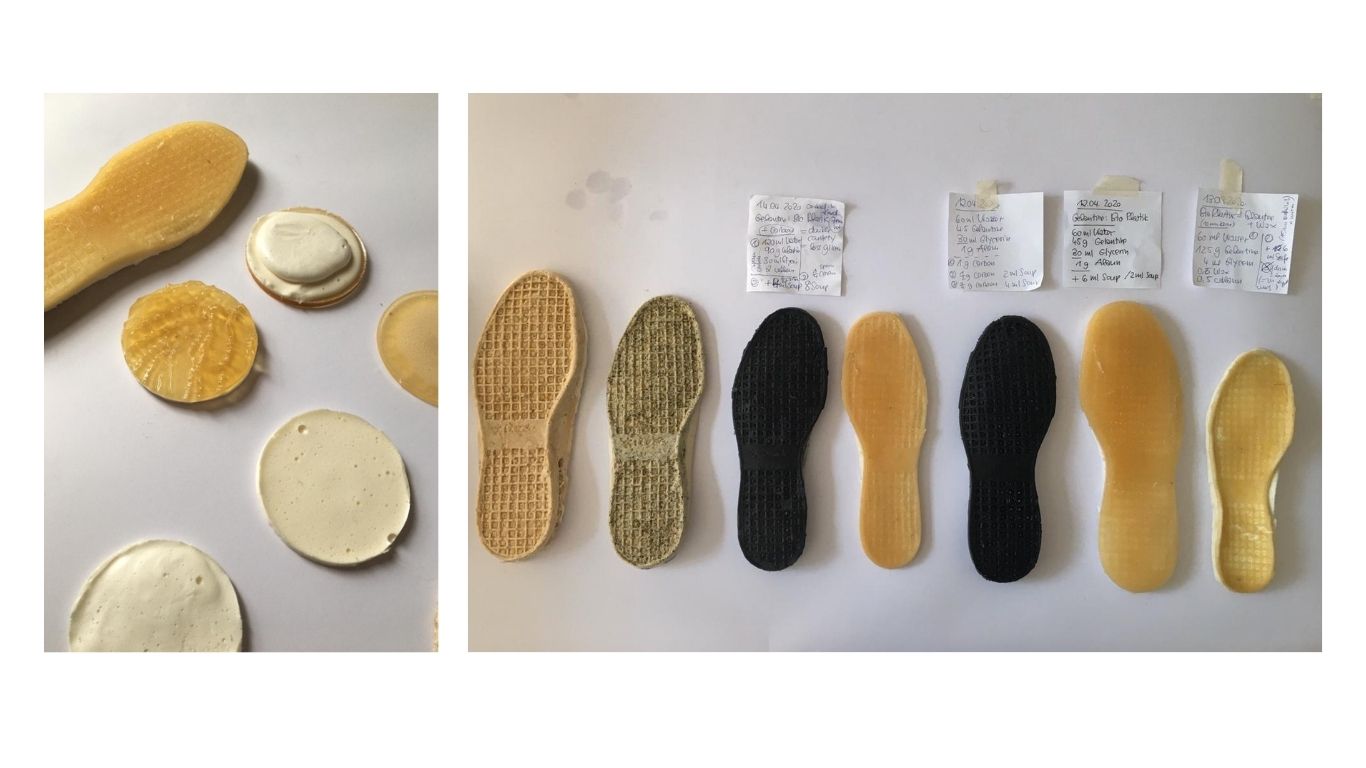
On the other hand, regarding the appearance of the shoes, I make sure of creating a very thin surfaces of bioplastic tissue to make it the assembly of the sneakers as stable as possible. Especially, I worked with glass and acrylic molds in order to create these delicate bioplastic layer, with a thickness of 1.4 mm to 1.6mm each one. It is important to mention again that for these bioplastic fabric I used gelatin and algae ingredients. After this testing period of developing different bioplastics I found that the one with the greatest resistance and flexibility is the bioplastic based of Gelatin.

"Regarding the appearance of the shoes, I make sure of creating a very thin surfaces of bioplastic tissue to make it as stable as possible."

The second model is ¨Crystal sneacker¨, which is a shoe based on mineral materials, where the cristalization of alum and other minerals looks to be include on the footwear industry. Going back to the ¨crystal sneakers¨, even if through the developing period the shoes lost some of their crystals, from an aesthetic approach and above all from a regenerative and ephemeral design approach, it reminded intact. Making way for the idea of ephemeral fashion where the product we wear disintegrates but without generating waste. And specifically for this design, sneakers made of natural crystals can dissolve in the water (its ecosystem) that initially allowed its development and appearance.
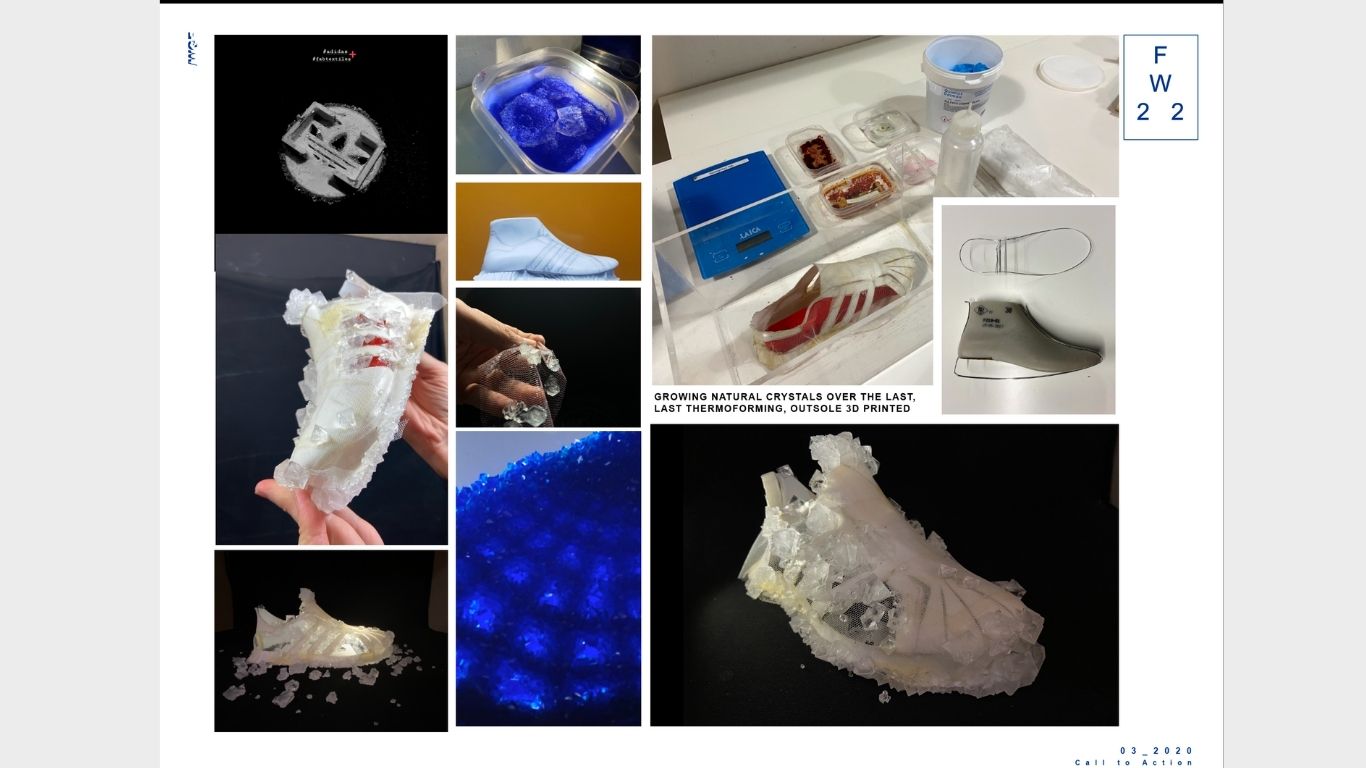
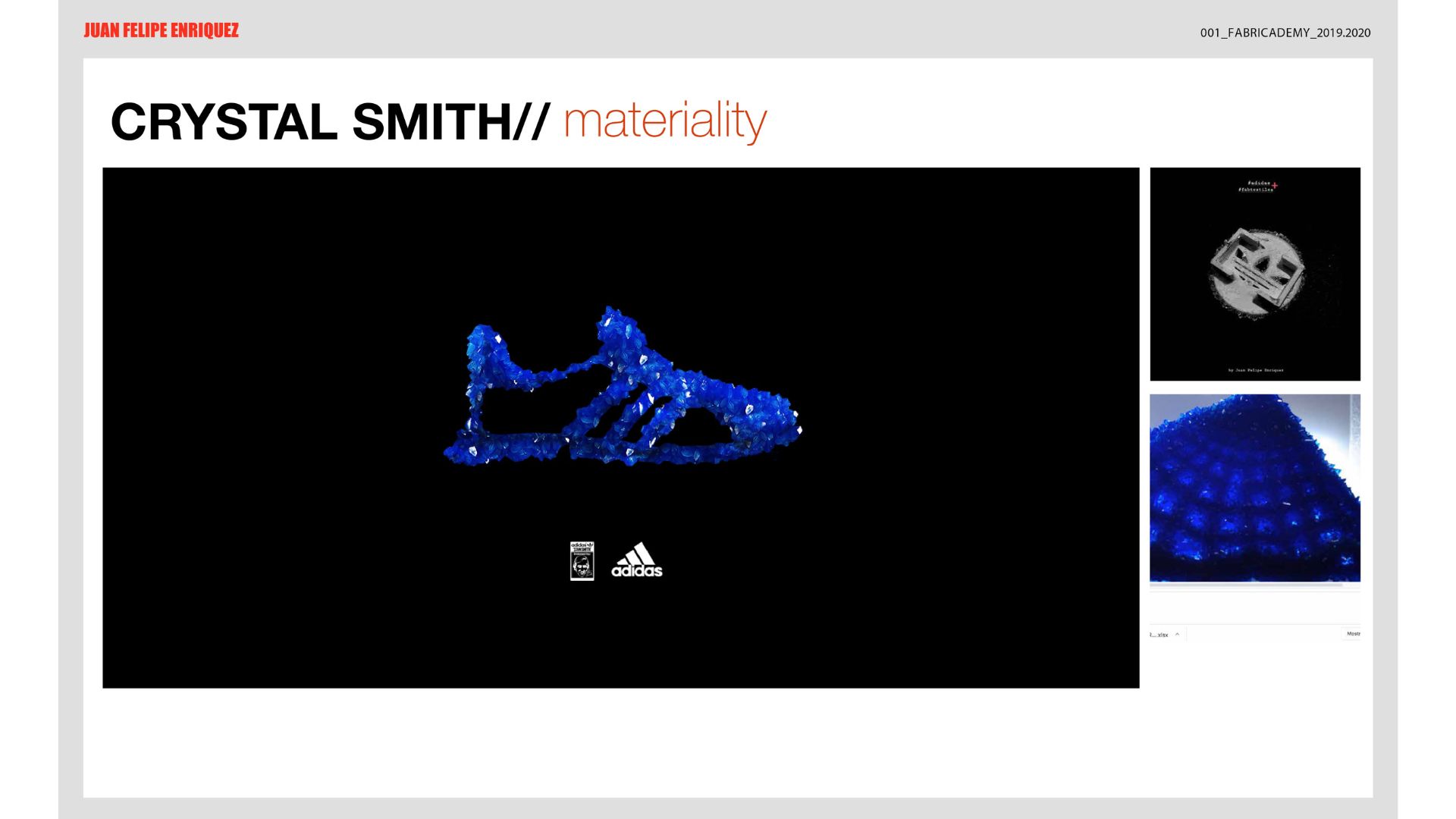
Vulcano sneakers line¶
The second line design was Vulcan, which is a line inspired by mountains and creating the idea of a set of tectonic lines of the earth. For make possible its creation I used the CNC machine, what allowed to create the perfect mold for then used the textile and scaffold technique. Allowing on this way maintain the details of the design.
Although the developing stages of a product, on a mailing machine, are usually 6 or 7, I decided to go only until first stage and interrupted the 3 total rounds that my model have at the beginning. All of these in order to maintain the futuristic aesthetics of the design. By this I mean an aesthetic of a more organic shoe that resembles nature without arriving to the flat design we usually see on the market. Which allow me to have the perfect mold that give the idea of a shoe topography as one piece.
See more of the technique used on my documentation from week 9
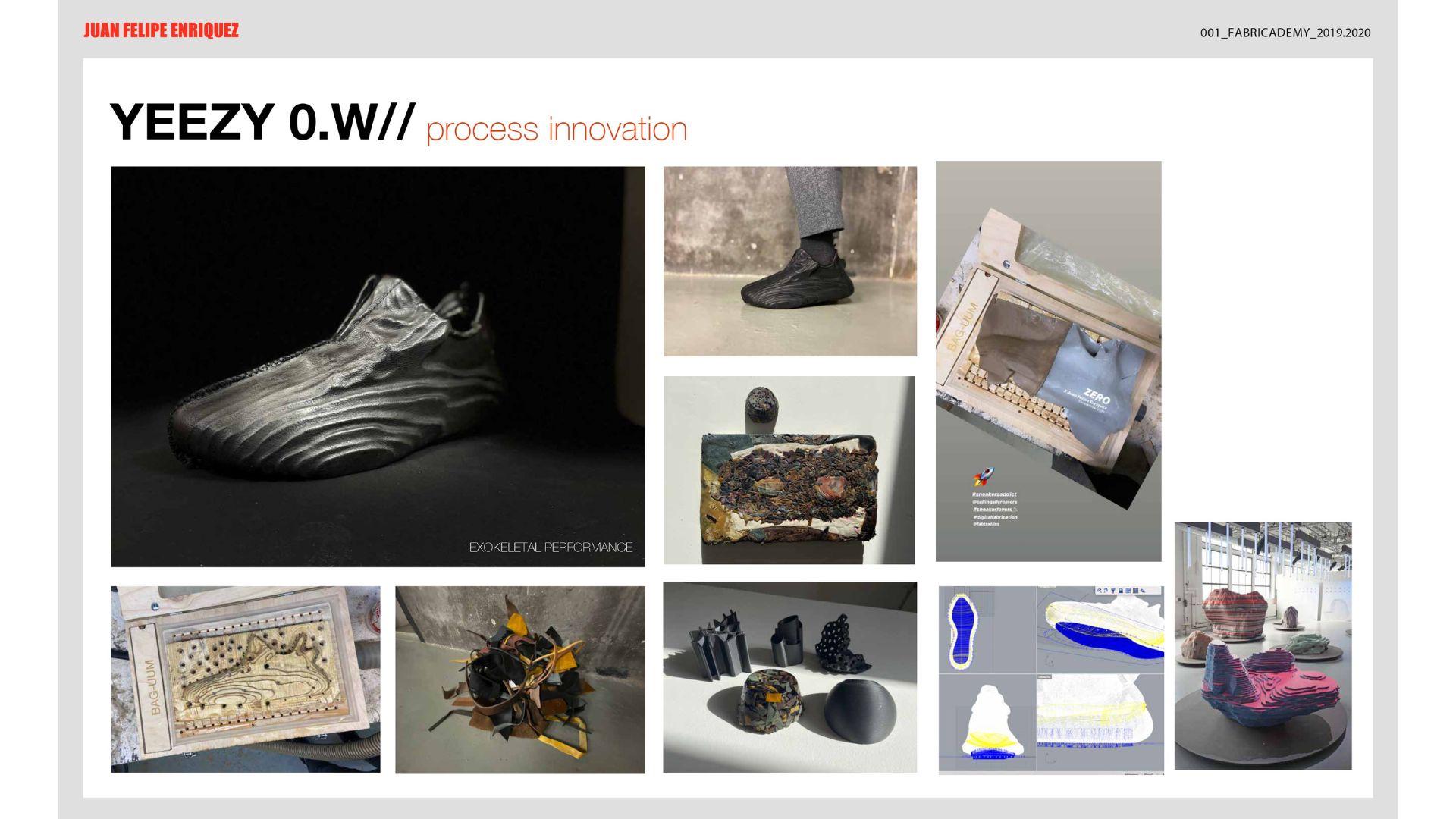
This mold and textile and scaffolding technique gave way to the creation of a design that eliminated the need for any cuts or seams necessary during final assembly. Nevertheless, during this final process I polished the beauty of each design line through a handmade process. In addition, the selection of the textile material was as important as the technique. For this model although I started using a vegetable leather shell material, which unfortunately its rigidity qualities were not adapted to the creation process, so I ended up using leather waste from the industry to include circularity of materials in the model.
For summarize, the Ocean and Vulcano sneaker lines undoubtedly attributes a level of uniqueness to the whole collection and to the sneaker industry.
Phyton sneakers line¶
"Digital Python" is more than a shoe, it is a call to action for industries and citizens. A reinterpretation of exotic skins from digital manufacturing and seamless joinery of each piece done by hand.
It redefines luxury through the reuse of leather lefovers from the bespoke italian fashion industries. Creating in this way an stylized, provocative and sensual piece. Furthermore, for created the "digital python" shoe I mixed different techniques like computational couture, sustainabiity and handmade
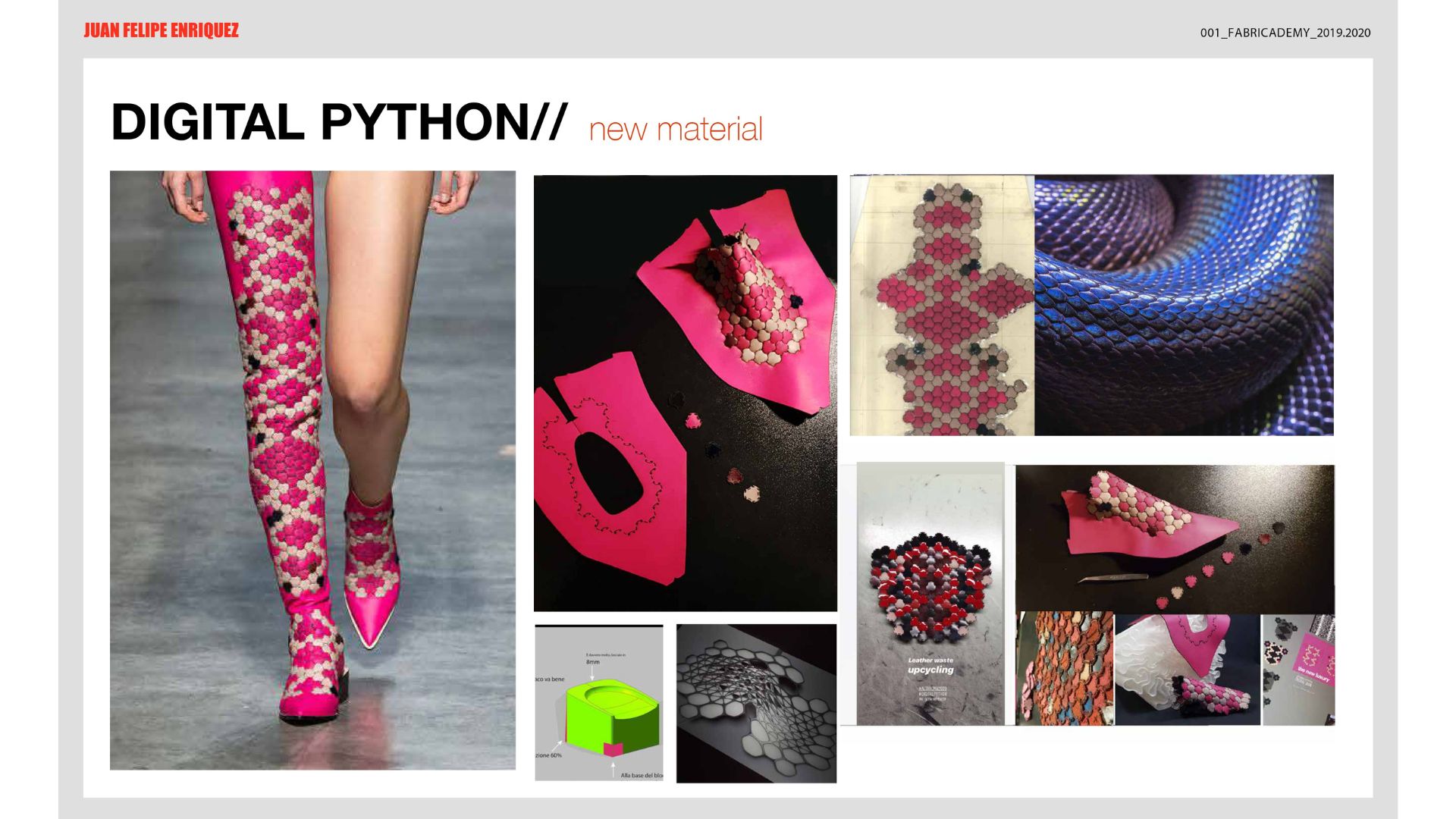
See more of the technique used on my documentation from week 3
Materials used¶
- Biomaterials - Gelatin and algie based
- PLA for 3D Printing
- Leather leftovers
- Alum
- Charcoal
Useful links¶
Final collection¶
